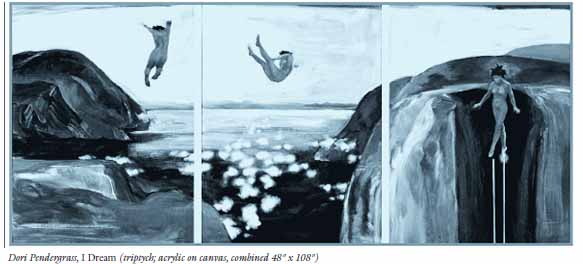“The Edge of Dreaming” Revisited
In an earlier post, I reviewed Amy Hardie’s brilliant film documentary, The Edge of Dreaming.
One of the comments Ms. Hardie made about the process was that she needed to go back in re-enter the dream, to transform it. Three psychotherapists had been unsuccessful in working with her, and she proceeded to find the help she needed through a Brazilian shaman.
Current research with veterans and PTSD has them re-entering the nightmare and re-scripting it and changing it. The results have been positive.
Even more closely related to people with enduring chronic illness and their need with dreamwork is the work of Tallulah Lyons and Wendy Pannier. Ms. Lyons and Ms. Pannier work with cancer patients, re-enter the dream in a relaxed and meditative state, and use guided image, drawing, and other methods to explore and transform the dream. They are shamans in their own right.


This is very interesting and thanks for posting this. The more information we get about the biochemistry of our brain the more we read descriptions that sound like early Jung and often early indigenous writing and stories. There is a very interesting post in the New Scientist about a man who went to hospital complaining of stomach pain. The consultant ran tests and explained he had advanced liver cancer. The patient asked for an exact prognosis. He was told he had three months to live. His illness followed the prognosis exactly. But after his death the autopsy showed he did not have liver cancer, and was in fact physiologically healthy. These links are very useful and I hope to make this sort of connection between the brain and the body the focus of my next film.
Ms. Hardie:
So glad to see film-makers exploring this area. Your liver cancer story reminds me of Rachel Naomi Remen’s story about the spontaneous remission of advanced liver cancer — This is an excerpt from an interview with her (http://www.shareguide.com/Remen.html)
The Share Guide: I was thinking about a story from Kitchen Table Wisdom–the story of one gentleman who was riddled with cancer in his bones and organs. He was expected to die but he recovered completely.
Dr. Remen: You mean the wonderful story from Sloan Kettering Hospital about spontaneous remission. There was this man who had been through chemotherapy that had stopped working. He went to the hospital to die. This was many years ago; there was no Hospice then. He had a miraculous recovery. Things happen all the time that cannot be explained, that are profoundly mysterious. That was one of them. It’s so un-American–the fact that life is based NOT on science but on mystery. Things happen that we can’t measure or explain. All we can do is observe them and be inspired by them. I think we have been caught up by science here, Dennis, and technology, as if science is going to define life for us.
The Share Guide: Yes, this is the story I was referring to.
Dr. Remen: All these lesions this man had (right under our noses, so to speak) went away and never came back! Were we in awe about this? No. We were frustrated as doctors. So we had to confirm the diagnosis by sending out slides for reanalysis. The diagnosis was a very malignant cancer. The conclusion that people came to was that the reason all these lesions had gone away was that the chemotherapy, which had been stopped 11 months before, had suddenly worked. Amazing! I think that too much “scientific objectivity” can actually make a person blind.
—————————————————————————————————————————————————–
(I would add that when I was dealing with my own serious illness, it was Dr. Remen’s books that were the most useful of anything I read…)